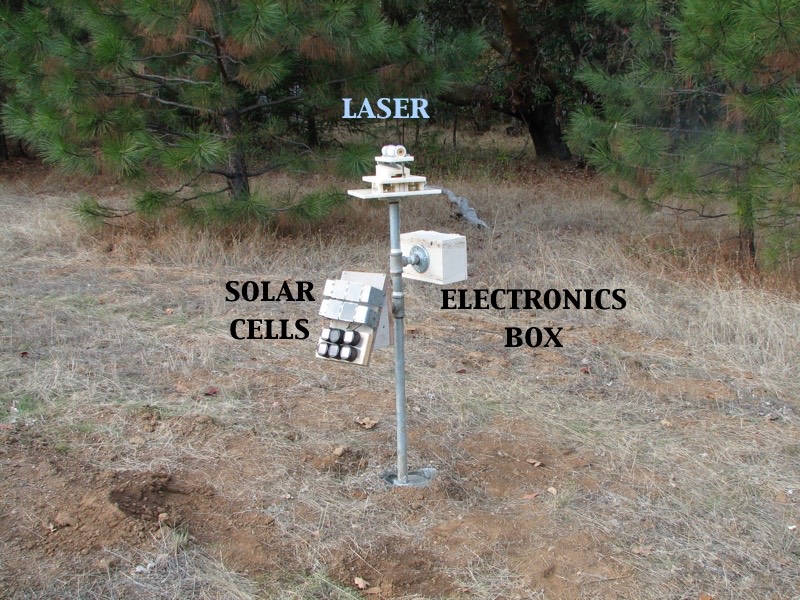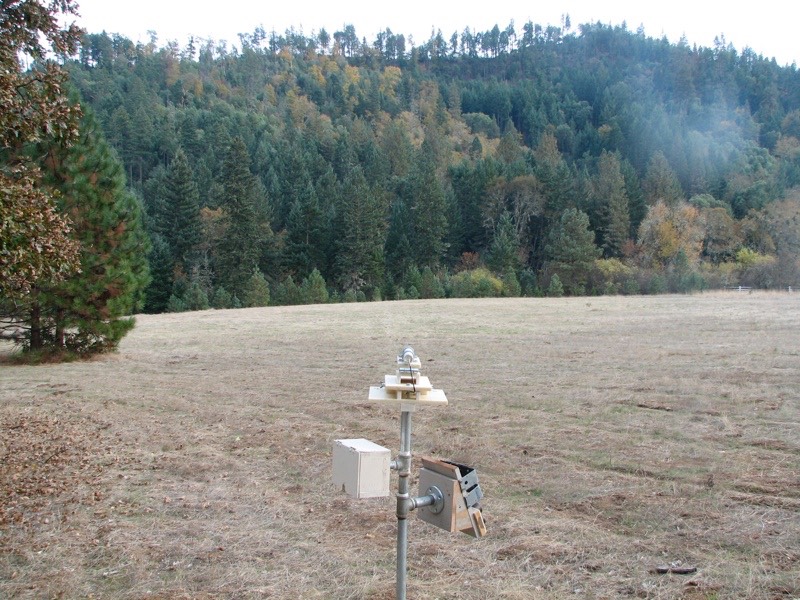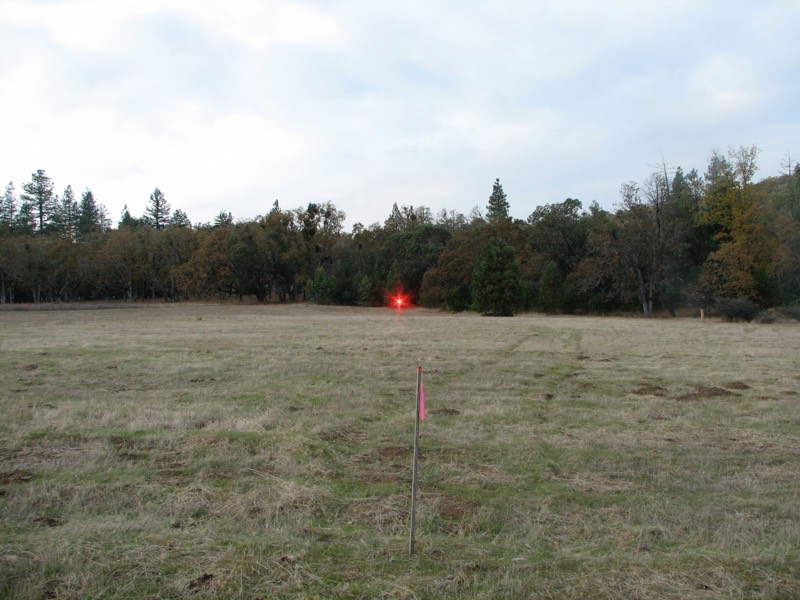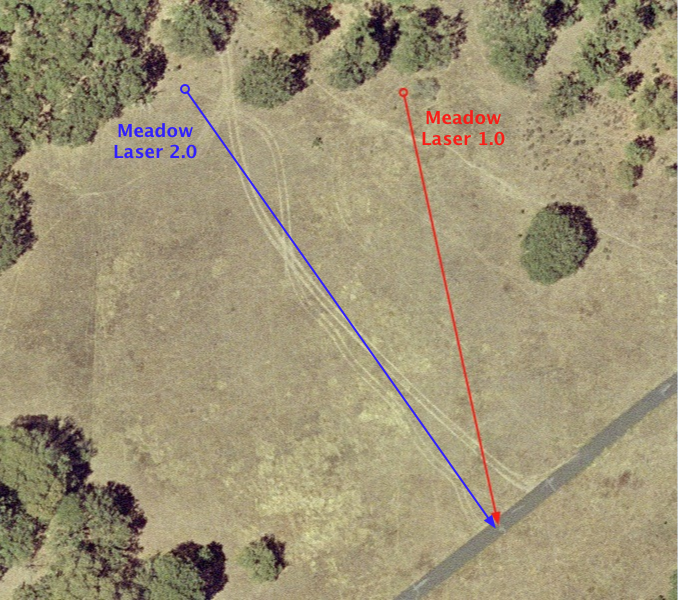November 8th, 2011
The original meadow laser only lasted about a year. I was using cheap parts: a couple of solar cells that I had laying around, some ancient NiCad batteries, and a pen laser that I cut apart. One of the solar cells expired, likely from overheating, the NiCads started losing capacity (largely because of the lousy charge-discharge cycle in this application), and the laser itself burned out. Moreover, the original arrangement was never stable: the support pillar was slowly drifting away from vertical, and the wooden parts shifted position as they expanded and contracted with the rains.
This time, I vowed, I would not compromise on the design. Instead of using an eight-inch log sunk into bare earth, I used a 1” pipe stuck into cement. For construction material, I cut up an old countertop that had been in one of the bathrooms when we moved in. This stuff was waterproof and seemed to have good thermal properties. I bought a proper diode laser with good output and low dispersion, a sealed lead-acid battery, and four good quality solar cells. I went through a lot of trial and error with the design. At first I tried to work at 3V, but a variety of problems tripped me up. During this process, I at one point had installed the solar cells behind a plexiglas window. They overheated, losing much of their capacity and leaking backcurrent. I didn’t figure all this out until I had gone through lots of tedious experimentation.
I eventually settled on a 6V design that feeds current into a 3V voltage regulator, which feeds the laser. This, it turns out, wastes a lot of power, but it turns out to have been the best overall solution. Besides, Kathy bought some of those stupid solar garden lights, which are a waste of money, so I cannibalized the solar cells and added them to my system. Here’s what it looks like:

The four good quality solar cells are square; the six garden light cells are underneath. I took some care in designing the mounting for the solar cells; they are set at the angle best suited for the sun in winter, because that’s when we have the least sunlight. During the summer, there’s more than enough. The big problem with solar cells, I learned, is overheating, so they must be kept cool. That’s why these are mounted on thick sheet metal painted black on the back side. I’ll be coating the front sides with aluminum foil next spring to help keep them cool during the summer. I am contemplating putting a tiny fan on the box to soak off some of the extra power in summer while cooling the cells.
All the wiring goes through the pipes; the only exposed wiring is just behind the solar cells and feeding into the laser; I shall be tidying those up soon.
The big question is whether the solar cells will generate enough power to keep the laser operating through the winter. The nights are long and the days are often cloudy. My 6V battery can power the laser for about a week without any recharge, so I think I’ll squeak through the winter.
Here’s the downrange view:

The target is just beyond the highest point of the rise. Here’s a view from the target:

And here’s the aerial view:

The distance from Meadow Laser 2.0 to the target is 415 feet. Yet the dispersion is so low that the spot is visible on a sheet of paper in the dark; it is perhaps 6 inches long by 4 inches wide. That’s 4 minutes of arc!
